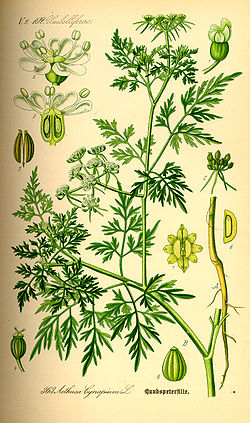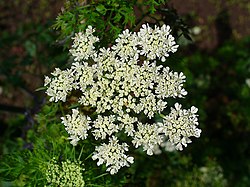This article needs additional citations for verification .(March 2016) |
| Aethusa cynapium | |
|---|---|
 | |
| Scientific classification | |
| Kingdom: | Plantae |
| Clade: | Tracheophytes |
| Clade: | Angiosperms |
| Clade: | Eudicots |
| Clade: | Asterids |
| Order: | Apiales |
| Family: | Apiaceae |
| Subfamily: | Apioideae |
| Tribe: | Selineae |
| Genus: | Aethusa |
| Species: | A. cynapium |
| Binomial name | |
| Aethusa cynapium | |
| Subspecies [1] | |
| |
Aethusa cynapium (fool's parsley, fool's cicely, or poison parsley) is an annual (rarely biennial) herb in the flowering plant family Apiaceae, native to Europe, western Asia, and northwest Africa. It is the only member of the genus Aethusa. It is related to hemlock and water-dropwort, and like them it is poisonous, [2] though less so than hemlock. It has been introduced into many other parts of the world and is a common weed in cultivated ground. [3]
